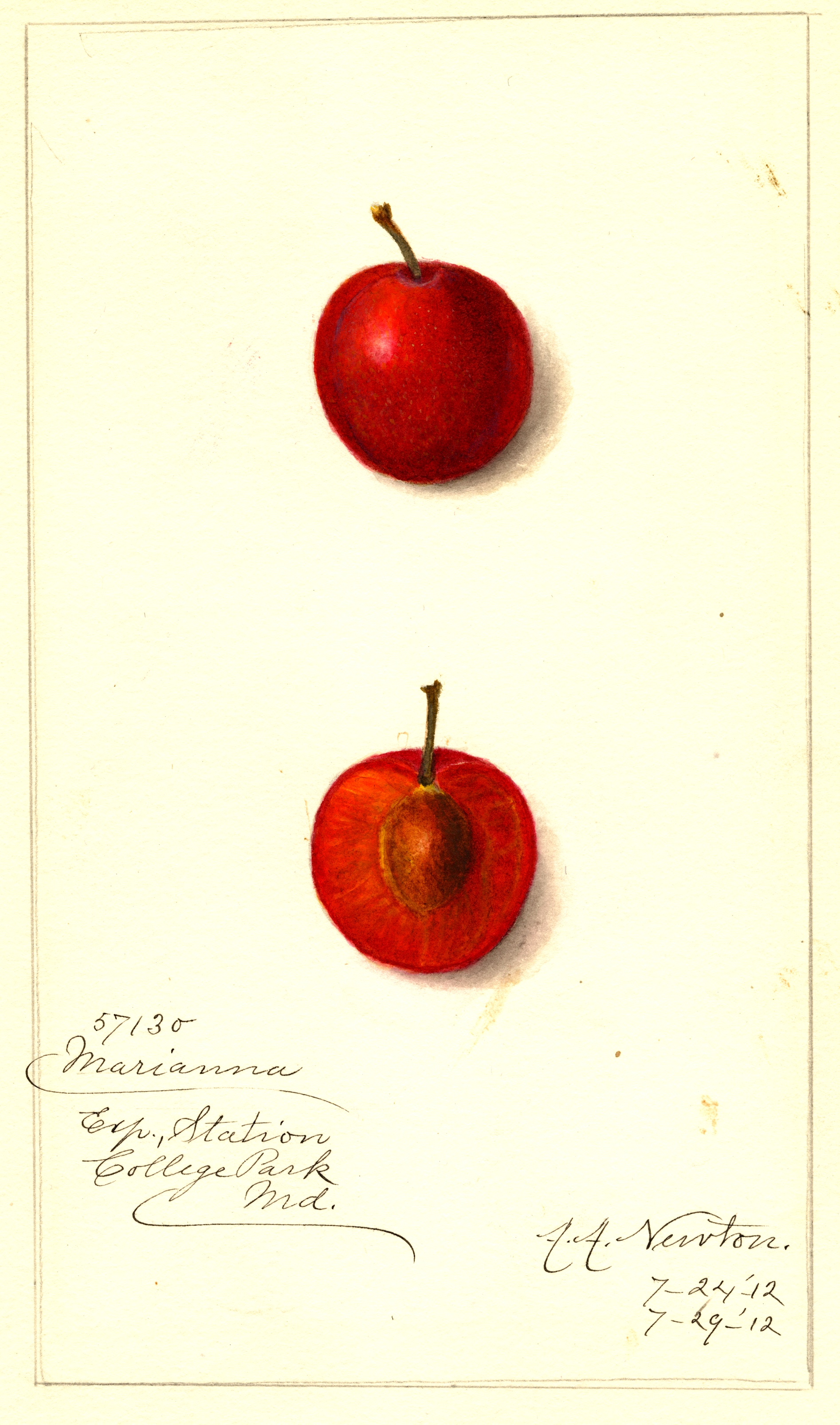
MARIANNA
Fruit Skin color.--Variable with a red blush and a yellow ground color. The red blush can vary from approximately 25 to 100 percent of the skin surface. The red commonly is present in a washed pattern which varies in intensity from bright red to orange-red. At times numerous very small calloused lenticel dots are visible especially over the red blushed areas. The yellow ground color commonly is present on most of the fruit and often varies from approximately 10 to 75 percent of the fruit surface. The fruit surface tends to be covered with a light greyish bloom. Flesh color.--Somewhat variable. In general is yellow amber. Many fruits exhibit this flesh coloration from skin to stone. As the fruit matures, some red coloration can appear in the flesh as well as in fibers adjacent the stone. Tree—vigorous and upright, spreading, growing 6 to 7 meters tall with oval to obviate leaves averaging 8 cm in length.
The tart acidic taste of the fresh fruit was an acquired taste for many humans when eaten fresh, but beloved by birds and animals. Yet made into jellies and preserves, the plum became a pantry staple in the South. Plum wine enjoyed a vogue among hobbiest fruit wine makes, particularly in Texas. The standard preparation for Marianna Plum Preserves called for cutting the plums into halves, removing the pits, placing the fruit into a saucepan, adding a cut of sugar for each cup of fruit. Cloves, allspice, some water, and orange juice were added. The mixture was brought to a boil then the heat lowered to a simmer for five minutes. It was then canned in mason jars.
A variety created by Charles Ely in Texas in 1884 crossing the native Wild Goose Plum (Prunus munsoniana) and the European Cherry Plum (Prunus cerasifera). It enjoyed wide popularity in the South, because it was “finer, larger and much earlier than the Wild Goose, of which it is a seedling; an early and abundant bearer of medium size, handsome, smooth and highly colored fruit, in quality good.” It began ripening in mid-June and continues for 3 weeks. There was a fashion at the turn of the century to plant Mariannas eight feet apart to form a dense shaded poultry run. [Cherokee Nursery Catalogue, Waycross GA 1893, p. 21.] Because the early form of this cross was an uncertain producer, it was subject to intensive improvement over the course of its existence, to make it annual in its fruit production, to increase the depth of its root penetration and to increase its already great vigor. The Marianna enjoyed a multiplicity of uses. Its vigor and disease resistence recommended its use as a stock for other vulnerable Asian plum varieties. Its tart fruit and ready growth habit became favored in the South for jelly making and the production of plum wine. And it proved a low-maintenance, reliable in place food source for yard fowl. Planted on 8 foot squares Marianna Plum chicken runs became a fixture in Texas and Louisiana.
Image: U.S. Department of Agriculture Pomological Watercolor Collection. Rare and Special Collections, National Agricultural Library, Beltsville, MD 20705, Amanda Newton, 1912.
David S. Shields